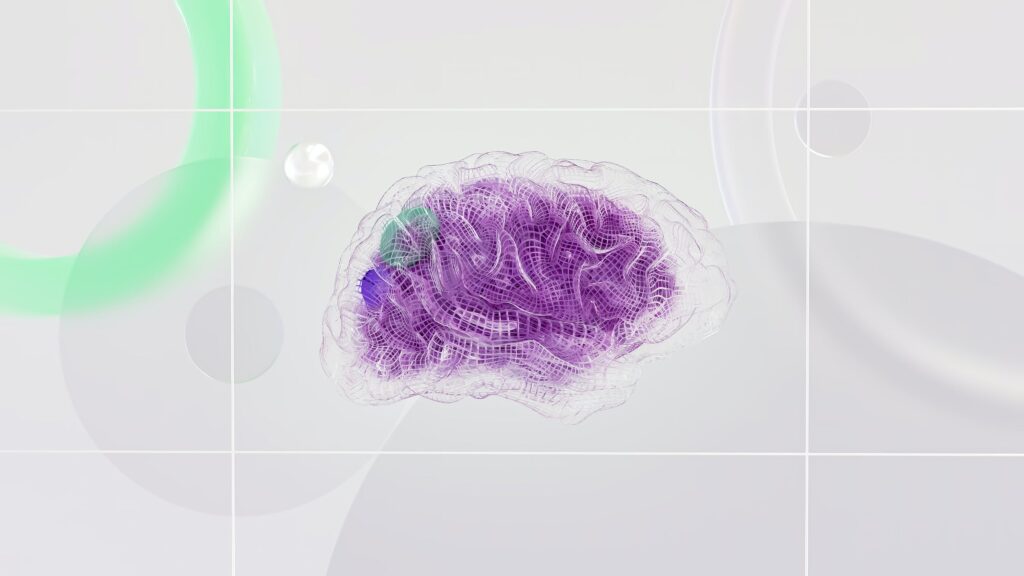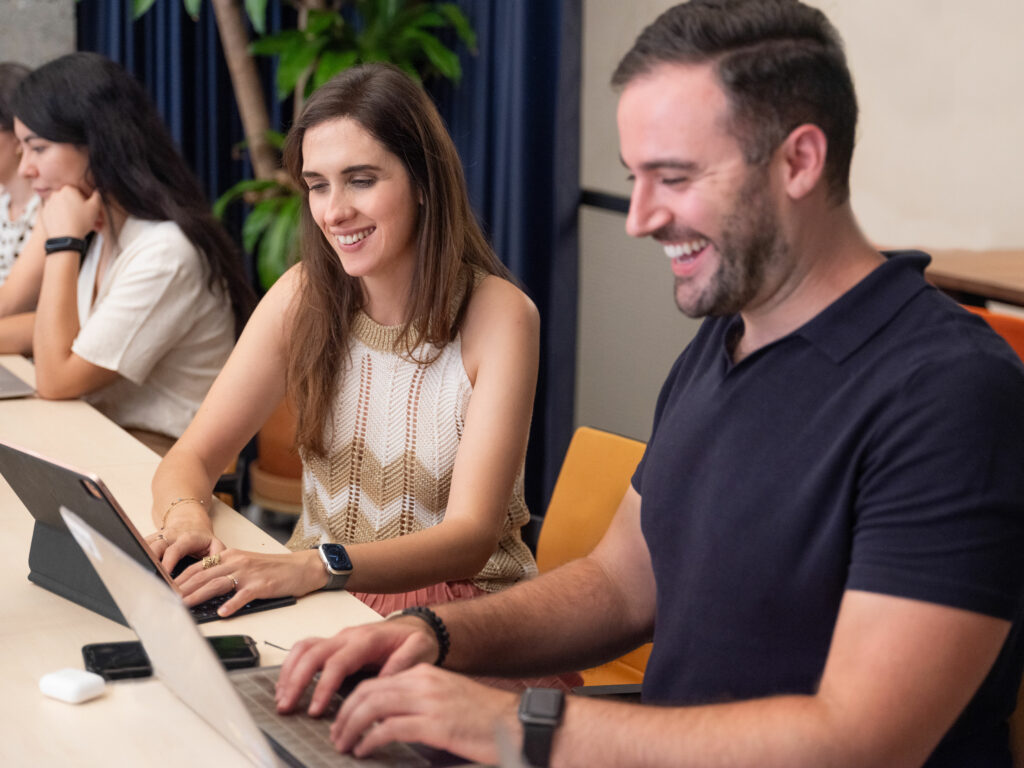Is AI translation the future for global businesses, or is it just the latest buzz? How does AI translation learn, and is it profiting from the work of human translators?
These are all important questions that multilingual businesses and expert translators are asking about the many AI translation tools coming into the market.
Keep reading to discover how AI translation works, what the industry predicts for AI translation, and whether it’s an ethical tool—or just plagiarism in disguise.
How does AI translation learn?

In previous decades, there was rule-based and statistical machine translation, and neither of which were particularly effective.
Then came neural machine translators (NMTs), which we can also think of as artificial intelligence translation. These translators have existed since the 1970s, and they use complex learning models to convert text from one language to another.
Google Translate, Microsoft Translator, and DeepL are all examples of popular NMTs. However, how deep their learning models go depends on the tool. In late 2023, Meta released its SeamlessM4T tool, which aims to become a real-time universal language translator, like the fictional Babel Fish in The Hitchhiker’s Guide to the Galaxy.
How AI translation works can get quite technical, but the basics are that every NMT uses an Artificial Neural Network (ANN). This network attempts to mimic human brain cells, with the ability to “learn” a language by connecting neurons to parameters.
When you use an AI translator, the machine encodes a given sentence into a sequence of numbers and then converts it to output numbers. Those output numbers are then decoded into the target language.
Note: There are also computer-assisted translation (CAT) tools. While NMTs automatically translates text for a user, CAT tools are translation software that assists a human translator. Many professional translators work with CAT tools, especially when dealing with massive amounts of text. To learn more about all kinds of machine translation tools, see our article: ChatGPT vs. machine translation tools
See also: How to use ChatGPT for marketing to a global audience
Testing the forefront of AI translation with our AI task force
As a multilingual marketing agency, we’re fascinated by AI translation. To keep up with developments, we established an AI and automation task force to experiment with new AI tools.
For our first major test, our team of linguists looked into HeyGen, an AI translator that’s gotten some buzz for its ability to make it convincingly seem like you’re speaking another language. Their Video Translate tool clones and edits your voice while adjusting your lip movements to look more natural in the new language.
VeraContent’s CEO, Shaheen Samavati, tried out this new translation technology in the video above. It samples 12 languages: French, Italian, German, Spanish, Korean, Hindi, Japanese, Mandarin, Portuguese, Dutch and Turkish.
The results:
When testing HeyGen, we purposely used more colloquial phrases like “this is wild!” and “shed some light” to test its ability to convert nuance and emotion. Then we had our native linguists, Irene Zamora, Liu Jian and Lara Luig study the Spanish, Chinese and German results, respectively.
The tool convincingly adapts lip movements to the target language, and the cloned voice stays consistent.
“I’d say the best is the realism of the lip movement—it’s quite spot-on! It even matches the Spanish accent of the AI voice.” – Irene Zamora, native Spanish-speaking translator
But the translations themselves weren’t always accurate, especially when it came to slang, expressions or colloquial phrases. It ultimately lacked proper contextualization and localization. The accents and tones were sometimes unnatural. And in some languages, it even omitted words it deemed unimportant.
See also: How AI localization helps marketers (and how it doesn’t)
For more on how we carried out the AI video translation test and our complete analysis, read our breakdown here: Can you trust AI video translation? Our linguists put it to the test, or watch our full discussion below:
Is AI translation profiting from the work of human translators?
Since their debuts, the world has been reeling from the emergence of AI creation tools like OpenAI’s ChatGPT and DALL-E 2. When ChatGPT began going viral, many people questioned if these tools were not only worth the time, but if they were ethical.
Media outlets highlighted fears that students could use ChatGPT to cheat on exams or essays, while artists criticized AI image generators like Hotpot as digital art thieves for learning from (and profiting off) the work of copyrighted human-created art—without the artist’s consent.
Do these concerns apply to AI translation? Is AI translation software profiting from the work of human translators?
To answer this, we must answer another question: are AI translation tools being trained on existing copyrighted work by human translators at all?
If the user supplies the original text, the answer is no; the machine is not generating new content from copyrighted sources and shouldn’t be considered plagiarism.
Unlike AI art generators, AI translation tools aren’t learning from a database of existing work that might be unethically sourced. The process is more like looking up each word in a dictionary than tracing a painting.
If the content comes from your team, then it’s yours to translate, whether by a human or a machine.
“These tools are good for making attention-getting short videos for social media—but of course, you should disclose that you’re using an AI tool. If, or when, this technology does improve to the point where it could be used for more purposes, it would be important to check that the output is accurate and appropriate for the intended use.”
— Shaheen Samavati, CEO and Co-founder of VeraContent
See also: Why outsourcing translation services actually saves money
Download our free interactive worksheet on adapting your content to local markets:

Will AI replace translators?
Despite the concerns about AI, it’s not going anywhere. AI translation in the medical and financial sectors is expected to grow, and industries, including hospitality, retail and law enforcement, are already experimenting.
Many professional translators, including associations like Interpreters and Translators, Inc., insist AI will never fully replace human translators because machines will never be able to capture the complexities of a language’s nuance and cultural influence.
Expert Dr Catherine Hua Xiang believes it’s impossible for AI to fully capture the cultural transfer involved in translation for three reasons:
“The meaning of language is always context-based; language is closely related to human emotions, so the subtlety of tones and voices change the impact and meaning; language can’t be separated from culture.”
Creative content, especially if it relies on humor or poetry, is notoriously tricky to effectively translate.

“I don’t see AI working autonomously without any human checking the content anytime soon. As a professional translator, you need to figure out how you can work in parallel with AI translation tools and focus more on the transcreation side of the translation process.”
– Irene Zamora, Spanish linguist at VeraContent
The consensus is that AI translation tools aren’t quite there—yet. VeraContent intends to keep a close eye on these exciting developments.
“Like machine translation increased the amount of content being translated, and therefore the need to edit those translations, I’m sure something similar will happen with AI, where there’ll be a greater need for professional translation editors to revise the results.”
– Shaheen Samavati, CEO of VeraContent
The best way to approach high quality translations is through a mix of AI tools and an expert human eye.
See also: Using ChatGPT to speed up content creation: What you need to know
AI translation is just getting started
At VeraContent, we’re excited by the quickly evolving nature of AI. With our AI and automation task force, we’re constantly finding and evaluating tools to help our clients connect with new local markets through tailored content.
While this technology is rapidly developing, there’s still nothing that can replace a professional human translator who is familiar with the local culture. That’s why we have a pool of vetted translators to make your content shine.
Get in touch with the VeraContent team and ask about our marketing translation services. Learn more about how we can help and find out if you qualify for a Free Content Consultation.

